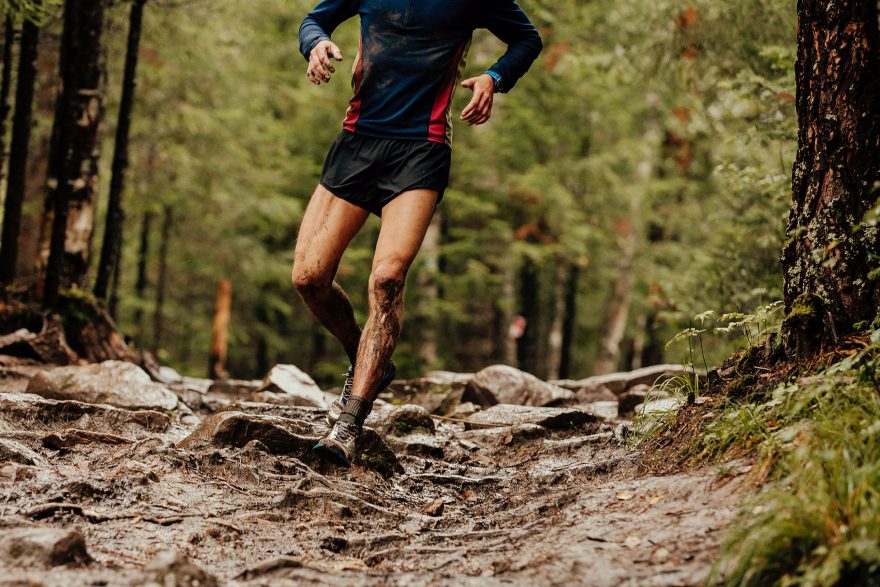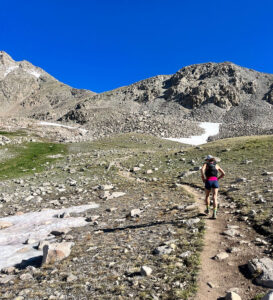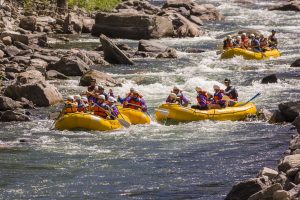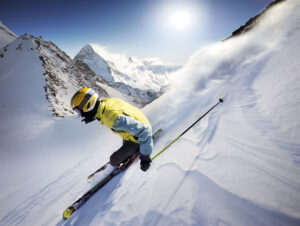
In your outdoor pursuits — from hiking to climbing, skiing to kayaking, or strolling on a river walk trail — you probably have some motivational reason for doing what you’re doing. You could be motivated to exercise, relax, to get fresh air or to simply have fun.
And fun (although a treat in itself) is a complex concept. Having fun may be different for you than other people. Consider how you’d feel after conquering a challenging trail with the exhaustion of a grueling ascent? What about how you’d felt during the ascent? When does the fun begin for you? During? Immediately after? Or when you’re back home reminiscing?
This complexity of fun has led psychologists over the last two decades to study the concept of fun. Collectively, these studies ultimately led to the formulation of the “fun scale.” The fun scale has three distinct types of outdoor enjoyment, ranging from the immediate thrill of Type 1, to the delayed gratification of Type 2, and the no-fun-at-all moments of Type 3.
As outdoor enthusiasts often say, “Type 2 fun is like a good wine; it gets better with time.”
Dr. Kelly Cordes, an avid climber and outdoor enthusiast, encapsulates this sentiment, saying, “Type 2 fun is when you’re kind of suffering, but then it’s over and you’re like, ‘That was awesome! Let’s do it again!'”

Image by Zachj6497, Shutterstock
It’s the discomfort, the challenge, and the perseverance that make Type 2 fun an integral part of outdoor exploration and a source of enduring memories.
Types of Fun Unpacked
The founding of types of fun is traced back to psychological explorations of recreational activities. Dr. Mihaly Csikszentmihalyi, a Hungarian-American psychologist renowned for his work on flow theory, suggested that people are happiest when they’re in a state of complete absorption and focus, known as “flow,” which dives in to the intricacies of enjoyment.
Type 1 Fun
Type 1 fun is most simply described as fun every step of the way, and it’s what most of us imagine when planning our adventures. This type is basically what happens when a plan comes together — the weather lines up for your hike, it snows for your ski trip, or you catch that magical day on Mount Washington where it’s warm and sunny without a hint of wind. For others, it can also be catching every wave, cruising through a crux, powder days, splitter cracks, and cold drinks next to a warm campfire.
This is what you brag to your friends about, and they are sad to have missed it.
Type 2 Fun
Type 2 is different, because it isn’t fun at the moment. In fact, it feels much like suffering. It’s only after the event, and in reflection, that you come to realize you actually had fun. Wading through chest-deep snow, dirty and loose rock, sketchy approaches, hikes that never seem to end, and anything that offers an overriding sense of doom and despair are clear indications you’re having a Type 2 experience. While Type 1 is marked with celebratory beers, Type 2 often leaves you feeling like you need a drink!
In spite of its almost-heinous nature, after a day, week, or month, you forget all about the terrible parts of your adventure and only remember the good moments.

Image courtesy of Rachel Lemcke
Think of a time outdoors when you’ve lost track of time and were fully immersed in an activity that challenged your skills at just the right level. You were most likely in your flow.
“Flow occurs when a person’s skills are fully involved in overcoming a challenge that is just about manageable,” said Csikszentmihalyi. This equilibrium, he argues, fosters a state of deep engagement and fulfillment, echoing the essence of Type 2 fun — wherein the struggle itself becomes a source of satisfaction.
Type 3 Fun
Type 3 fun refers to activities that aren’t enjoyable while doing them, nor afterward, yet they hold an odd allure because of the challenge and growth they offer. The “fun” you could say is in self-discovery — specifically the fun may be found in the fulfillment of pushing their limits or confronting fears.
Although not fun in the traditional sense, Type 3 types of activities are driven by motivations beyond immediate enjoyment, such as personal growth, overcoming fears, or pushing your limits in pursuit of a greater goal. (One example could be skydiving or parasailing for someone afraid of heights. They’ll most likely do it one time to attempt to push themselves, but it isn’t a fun activity during the actual activity.)
It’s Type 3 that chases us away from activities altogether, creating memories that might be more fun for others to hear about afterward. In fact, most great stories of Type 3 Fun will include the phrase, “And that was the last time I …”
Psychology of Fun
In a University College London study on the psychology of fun, Professor Christopher McManus and Andrian Furnham researched the types of fun, attitudes of fun and their relation to personality.
They asked 1,100 people to fill out a questionnaire with 40 questions about their attitudes toward fun. They found five ways people see fun:
- some like risky stuff,
- some need fun people around,
- some feel happy when they have fun,
- some think they need money for fun,
- some just like things happening suddenly.
These different ways of seeing fun were related to things like a person’s age, personality, and how they see fun in general.
“In the pursuit of fun, we often overlook its complexity, for ‘fun’ is not a singular concept but a multifaceted phenomenon,” McManus said. “Each facet resonating differently with individuals.”

Image by Rob Crandall, Shutterstock
Dr. Eric Brymer, a leading figure in the field of adventure psychology, emphasizes the transformative potential inherent in discomfort and adversity.
“We tend to think of outdoor adventures as enjoyable pursuits, but often the most meaningful experiences involve struggle and discomfort,” said Brymer. This sentiment underscores the paradoxical nature of Type 2 fun, wherein adversity turns into achievement, and discomfort yields growth.
The concept of Type 2 fun offers us an understanding of outdoor enjoyment. As adventurers, we navigate the spectrum of fun, embracing both the immediate thrills and the enduring lessons embedded within our outdoor escapades.
Type 2 Fun Examples in the Field
Imagine you’ve dreamed of summiting Mount Rainer, the peak overlooking Washington’s landscape. You join a seasoned group of mountaineers, embark on the challenging trail from Paradise, aiming for the summit at 14,411 feet. However, the weather on the mountain had other plans. As you trudge through the deep snow and battle fierce winds, you feel the weight of the elements bearing down on you. Each step forward feels like a struggle against nature itself.
Despite the hardships, you press on, drawing strength from the camaraderie of your team and the determination to reach the top. Finally, after hours of grueling effort, you stand triumphantly at the summit. The sun breaks through the clouds. In that moment, the challenges of the journey fade into the background, replaced by a profound sense of achievement and awe.
“As we navigate the landscapes of leisure, we encounter different shades of fun, from the exhilarating ‘Fun involving risk-taking’ to the tranquil ‘Contentment,’ each reflecting our attitudes, personalities, and the situations we embrace,” McManus said.

Image by IM_photo, Shutterstock
Imagine you’re joining your friends for a weekend of backcountry skiing in the rugged terrain surrounding Salt Lake City, Utah. Your destination is the famous Mill D North Fork Trail, renowned for its untouched powder and challenging terrain. Setting out from the trailhead in Big Cottonwood Canyon, your group is filled with anticipation for the adventure ahead. But you soon find yourself battling through a sudden snowstorm that obscures your visibility making navigation nearly impossible.
Despite the whiteout conditions and the strain of breaking trail through deep snow, you and your friends press on — your determination fueled by the promise of untouched powder. Finally emerging from the storm, you’re greeted by a pristine landscape. As you carve turns through the untouched powder, the hardships of the journey melt away. Despite the challenges you faced, you made memories that would last a lifetime. That’s Type 2 fun.
Some people who participate in outdoor recreation have become almost pathologically obsessed with Type 2 fun. More and more, outdoor adventurers immerse themselves in experiences that straddle the line between enjoyment and challenge — finding delayed fulfillment.
Suzanne Downing is an outdoor writer and photographer in Montana with an environmental science journalism background. Her work can be found in Outdoors Unlimited, Bugle Magazine, Missoulian, Byline Magazine, Communique, MTPR online, UM Native News, National Wildlife Federation campaigns and more.
 Your Privacy Choices
Your Privacy Choices
 The
The